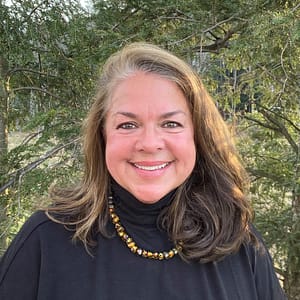Daniel Kish is a blind man who sees the world with sound. He travels the globe by himself teaching others to see with senses that we all have but are unaware of! Through his work, he’s teaching us all to redefine what is “impossible” for ourselves.
Not long ago, we thought the brain’s circuits were wired once in a precise, fixed way and then slowly degraded through our lives. Not any more! We’re learning more every day about the brain’s astounding ability to constantly form new pathways and connections when there is damage or our capacities begin to fail somewhere in the brain. We can even change our brain at will if we decide to.
Daniel Kish has had a life that is a testament to that research, using his brain’s potential to adapt to blindness: he “sees” much like bats and dolphins. His work points to the fact that similar capacities probably lie dormant in us all. We may be standing on the edge of a leap of human potential. His work is one of those stories that turns commonly held notions on their head.
In this article, we dive into the potential of yet another future we once thought impossible.

How Daniel Kish begin his remarkable journey…
Daniel Kish lost both his eyes to cancer by the time he was only 13 months old. Fortunately, his mother did not discourage the distinctive clicking sounds he started to make as a toddler. She quickly realized that he was deliberately directing them at that world around him. Turns out, those clicks were rewiring his brain so he could use something called “Flash Sonar” to create mental pictures of his surroundings.
Daniel tells me that the capacity to use this echolocation comes from deep in our evolutionary roots. The impulse to echolocate is so ingrained in us that most young blind children will automatically start echolocating by making signals or using sounds in the environment. But parents and teachers usually see echolocation behaviors such as clicking, clapping, or foot-stomping as a nuisance and quickly discourage it rather than redirecting or refining the behavior to be less obtrusive and more effective.
What they don’t realize is that by doing so, they have cut the child off from being able to use a powerful, natural adaptation that most blind people can learn to use to become as independent as Daniel.
The young do not know enough to be prudent and therefore they attempt the impossible…and achieve it generation after generation.
Pearl S. Buck
That quote is a wonderful reminder of the journey we are all on both as a species and as individuals. When we let the young lead, they will often show us the way to the future.
You’ve got to see this all for yourself to understand the way this kicks down the door on our limitations. Let’s dive into this remarkable path of possibility with a video that leaves us wondering what else is possible!
Why should the blind forever have to borrow a pair of eyes?
At the start of all this wonder was Daniel’s mother. She wanted Daniel to live a life with as much freedom and independence as possible. His mother knew that if a blind person must rely on taking the arm of a companion, then they were essentially restricted to “borrowing a pair of eyes” to get through their lives. She knew there might be a time and place for a guide, dog or human, but she wanted Daniel to be able to make those choices freely for himself rather than having them forced upon him by restrictions and presumptions.
Think about the gravity of accepting that as the only work-around to missing one of the senses.
But both Daniel and his mother imagined a different future, and every decision they made thereafter reinforced its progress to reality. Daniel travels the world on his own to teach the echolocation techniques and since the year 2000 he has been the founder and CEO of an organization, World Access for the Blind, with a program called Visioneers.
The potential to radically change the life of every blind person on the planet is a reality now.
Here at the Goodness Exchange, we’ve noticed that is the way most of the thought leaders we write about move through time. Where others see concrete limitations, they see the unrealized potential. Arthur C. Clarke, arguably the most famous writer of Science Fiction of the 20th century, said it best when he observed that all revolutionary leaps of progress pass through the following stages:
First, it’s completely impossible.
Then, it’s possible, but it’s not worth doing.
And finally, everyone is saying it was a good idea all along.
When I read that progression I wonder what the people of Abraham Lincoln’s day would think of the things we consider commonplace: space flight, the internet, and GPS navigation.
Is Daniel demonstrating just another incredible aspect of our brain’s capacity? One day will we all be regularly using our senses to accomplish extraordinary feats we can’t imagine now?
There is no shortage of interest in this wonder. Daniel has had so much press coverage that Visioneers estimates his work has been seen by over 2 billion people. In fact, you can google Daniel’s name and links to his press coverage go on for 13 pages.
Rather than get lost in all that, here is one of my very favorite pieces covering his abilities, by Australia’s ABC Science. Since seeing this piece, with its wonderful window into humanity and science, I’ve pushed my definition of the impossible way back! See what you think:
Only he who can see the invisible can do the impossible.
– Frank Gaines
Is it the sighted people who have the blinders on?
Daniel was gracious enough to return my call 4 years ago when I wrote our first article about his work. Since then, we’ve published over a thousand articles about innovation and I have watched the world expanding in all directions. That expansion always starts with someone who questions the status quo, sees a radically different future, and blazes a whole new path. That’s Daniel.
Over the years, Daniel and I have become great friends. We talk almost weekly, and he has shared with me some of the obstacles that exist in the systems that sighted people have created surrounding blindness. First and foremost is the astounding fact that very few organizations for the blind are even recognizing, much less teaching, Daniel’s techniques as a possible adaptation for the blind. Millions of sightless people do not even know this is an option for them. That could stem from the second fact that I found incredible: blind people are highly underrepresented in key leadership positions and managing boards of most organizations, large and small, that claim to support blind people throughout the world.
That seems so enormously patriarchal and very out of step with today’s norms for empowerment, agency, and transparency. Why wouldn’t someone as capable, credible, and accomplished as Daniel have consultancy on many of those boards?
I was also surprised to learn that Daniel’s wonderful organization is not finding the funding support you might think would be out there. With this kind of potential, so perfectly demonstrated for so long, I expected to learn there would be inspired individuals and organizations just waiting for an opportunity to further the potential of this concept. I just assumed that people would be breaking down Daniel’s door to give their children the gift of lifelong independence.
But it turns out, for lack of funding, Visioneers has a long waiting list of hopeful people around the world who they do not have the resources to help. It seems that most people who might have the means to help, just don’t realize this is an option, yet. But I think a new day is coming. In fact, if you know of someone who is visually impaired, encourage them to reach out to Visioneers. They can be a part of a wave of insightful people who inspire leaders in this field to update all our expectations for what humans are capable of.
Here are just 30 seconds of Daniel describing what that looks like far more eloquently than I can:
I suspect the message Daniel is delivering there could apply to every individual or group that is yearning to make their own leap of progress.
(If you’d like to see that video in its entirety, you will be rewarded by many personal stories from people all over the world who use Daniel’s insights to make their way in the world. You can find it at Echolocation: Seeing with Sound.)
Lots of things are deemed “impossible” until someone does them with such apparent ease that we feel we might be able to do it too! Daniel and his other echolocation teachers are doing just that. They are a shining example of the wave of progress that is underway in our world: the #ConspiracyOfGoodness movement.
If you’d like to support the work of Daniel’s team, you can change the lives of many. This organization is very approachable and connects easily, so let them know you are out there! They survive on support that feels like it is dwindling every day, but the Ever Widening Circles community can make that go the other way! Check out the Support Visioneers webpage.
Stay open, hopeful and curious!
~ Dr. Lynda

Don’t miss out on a single article!
Enjoy unlimited access to over 500 articles & podcast that give you a positive perspective on the state of the world and show you practical ways you can help.
Notes:
- Buzzfeed Multiplayer. “How A Blind Man Sees With Sound.” YouTube, BuzzFeed Multiplayer, 21 Dec. 2014, www.youtube.com/watch?v=PLPEcu6523Q. Accessed 29 July 2019. ↩
- ABC Science. “ECHOLOCATION.” YouTube, ABC Science, 12 Apr. 2016, https://www.youtube.com/watch?v=AofvXF6UQvc. Accessed 29 July 2019. ↩
- The Feed. “Echolocation: Seeing With Sound I The Feed.” YouTube, The Feed, 12 Mar. 2015, https://www.youtube.com/watch?v=6emot4WEh8Y. Accessed 29 July 2019. ↩








